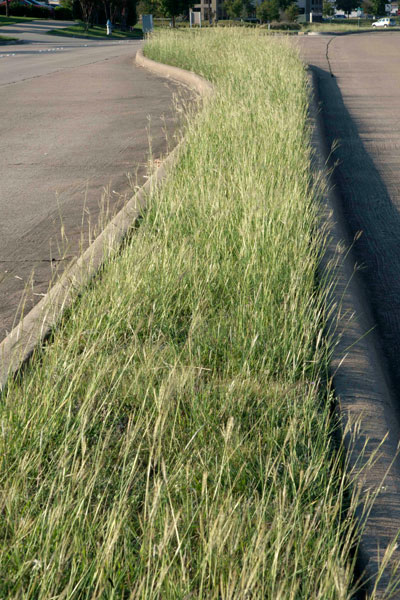Question of the Week Number 1: October 12, 2017
“Neil, this weed is taking over my lawn. What is it, and how can I get rid of it?”
This is a perfect example of a great idea that ran off track, at least for many of us gardeners. King Ranch bluestem was introduced to Texas almost 100 years ago. Native to southern Europe and Africa, it soon took a liking to Texas. It was being used as livestock forage and to stabilize bare ground where roads were being constructed, and it was definitely up to those tasks.

Photo: KR bluestem heads show up each October casting seeds far and wide.
However, KR bluestem wasn’t satisfied with just growing along our roadways. It soon headed into our pastures and lawns, and it began to threaten the diversity of our native grasslands. You’ll see it in abundant bloom in poorly maintained landscapes all across Texas right now. It’s a perennial grass, so it’s been there all summer, but fall is its bloom time, and that’s when you’ll see it most easily.
I’ve been watching this weed for many years, and I’ve noticed that it rarely shows up in well-maintained lawns. Where people water and feed their grass adequately, and where they mow their lawns frequently, KR bluestem seldom becomes much of a problem. Like so many other weeds, this weed is a sign of neglect.
So my first recommendation in dealing with KR bluestem in a home lawn setting is to take the best possible care of your turf. If you do all of that and still have an outbreak, you can spot-treat the worst clumps with a glyphosate-only herbicide and then replant once you’ve gotten rid of the weed. But we have no selective herbicide that will let you kill KR bluestem within a bermuda or St. Augustine lawn without doing serious damage to the “good” grass. There are times when hand-digging the clumps becomes a pretty good option for immediate relief.

Photo: Left untended, KR bluestem can explode to these proportions. This is a median in a North Texas city street. Landscapes up and down the block will probably be populated from this one seed source.
If you have this weed in pastures I’m going to refer you to your local county Extension office. They’ll have better suggestions than I for the non-horticultural settings.
